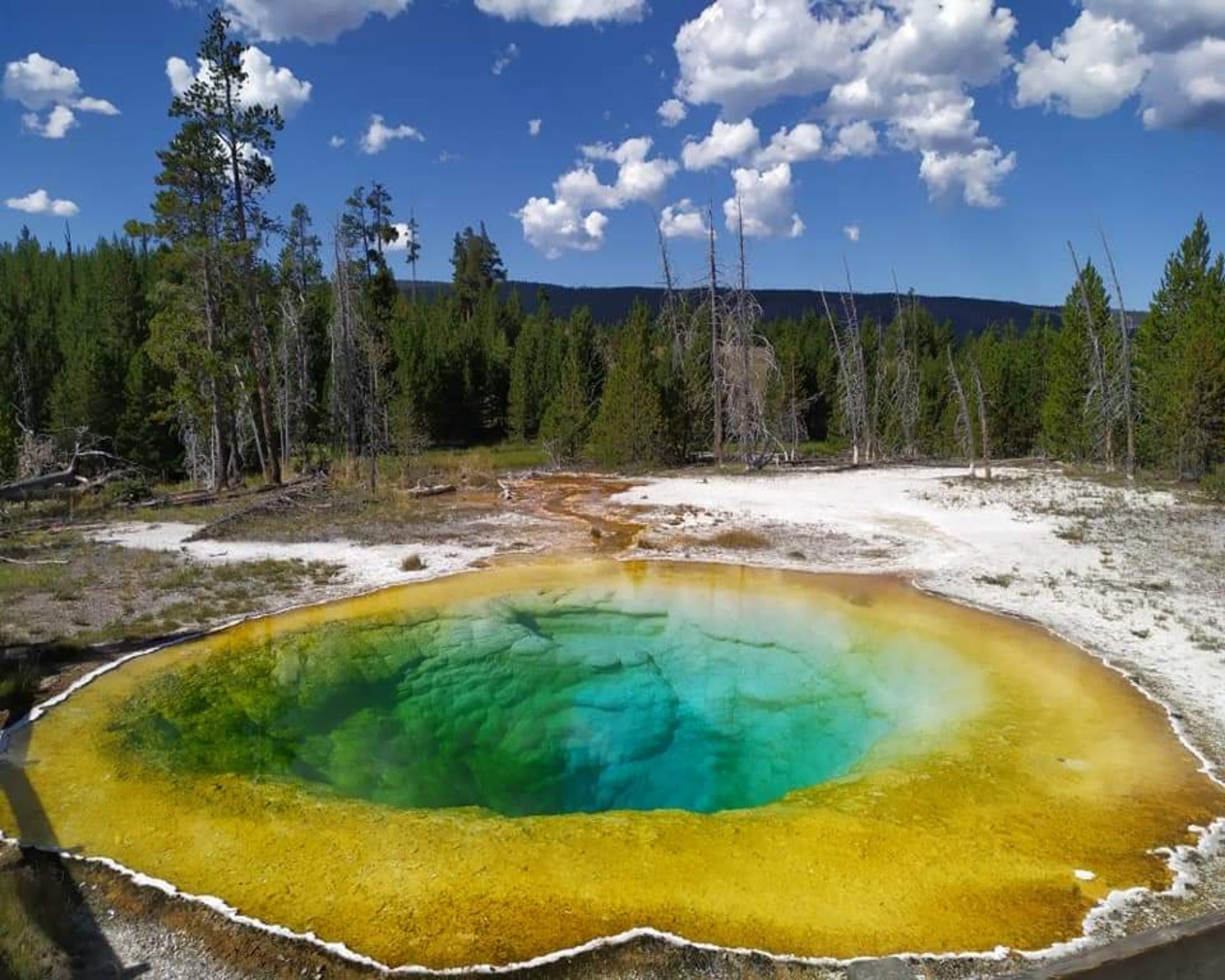Yellowstone tourists accused of ruining Morning Glory’s crystal blue color with ‘thousands’ of coins
A former ranger of Yellowstone National Park said he found ‘thousands of coins’ inside the pool
Your support helps us to tell the story
From reproductive rights to climate change to Big Tech, The Independent is on the ground when the story is developing. Whether it's investigating the financials of Elon Musk's pro-Trump PAC or producing our latest documentary, 'The A Word', which shines a light on the American women fighting for reproductive rights, we know how important it is to parse out the facts from the messaging.
At such a critical moment in US history, we need reporters on the ground. Your donation allows us to keep sending journalists to speak to both sides of the story.
The Independent is trusted by Americans across the entire political spectrum. And unlike many other quality news outlets, we choose not to lock Americans out of our reporting and analysis with paywalls. We believe quality journalism should be available to everyone, paid for by those who can afford it.
Your support makes all the difference.Yellowstone National Park’s famous geothermal pool named Morning Glory has reportedly changed color due to the volume of debris thrown in by visitors.
According to park historians and former employees, the once-jet blue water of the pool has been affected by coins, trash, and rocks that tourists have thrown in over the years.
“We found tons, probably thousands of coins,” former Yellowstone ranger Jeff Henry told Wyoming news outlet Cowboy State Daily. “The main park road used to go right by Morning Glory, so that would account for some of the metal parts that looked like car parts chucked into the bottom of the pool.”
According to the publication, the deep parts of the pool are now green and the edges of it have transitioned to yellow. As artifacts have continued to be thrown in the pool, this color change has also been due to the temperature of the water.
“Hotter pools tend to be a brilliant blue, and cooler pools can be more colorful since bacteria can grow there,” Mike Poland, scientist-in-charge of the Yellowstone Volcano Observatory, said. “At Morning Glory, the temperature cooled because people throwing objects in caused the conduit to become partially blocked, and the temperature went down, allowing different types of bacteria to grow.”
The tradition of throwing things into the pool dates back to 1872, when the park first opened, according to Yellowstone National Park historian Alica Murphy. She claimed that tourists have always been known for throwing objects into the pool, hoping for either good luck or to prompt a geothermic event.

“People didn’t understand the plumbing and how geysers worked,” she told Cowboy State Daily. “There were lots of ideas about, ‘If we throw something into this pool, we might be able to make it erupt.’
“I think there was some trial and error and a misunderstanding of the damage they were doing.”
Murphy added: “Wishing wells are a time-honored tradition. Flip a coin into a wishing well and make a wish. There is something about a pool of water that gives humans a weird instinct to throw things into it.”
However, Henry noted that he hasn’t seen “anywhere near as many coins in pools” in recent years as he did at the beginning of his decades-long career.
“The bottoms of the more accessible springs used to be paved with coins, but now it’s pretty rare to see anything thrown into the pools,” he said.
He shared that throughout many of the pools at Yellowstone Park, he’s seen fewer and fewer coins being thrown in there. “I think people are much more respectful than they were in my early days. It’s one way that values and behavior have changed over the years,” he added.
According to the National Park Service, the Morning Glory Pool was “named in the 1880s for its remarkable likeness to its namesake flower.” As it has become a victim of vandalism, much of the debris thrown into it “became embedded in the sides and vent of the spring, which reduced the water circulation and thus the water temperature.”
However, “natural changes may be cooling the water,” with cool temperatures allowing “orange-and yellow-colored bacteria to thrive.” The average temperature of the pool is 159.3 degrees Fahrenheit.

Join our commenting forum
Join thought-provoking conversations, follow other Independent readers and see their replies
Comments